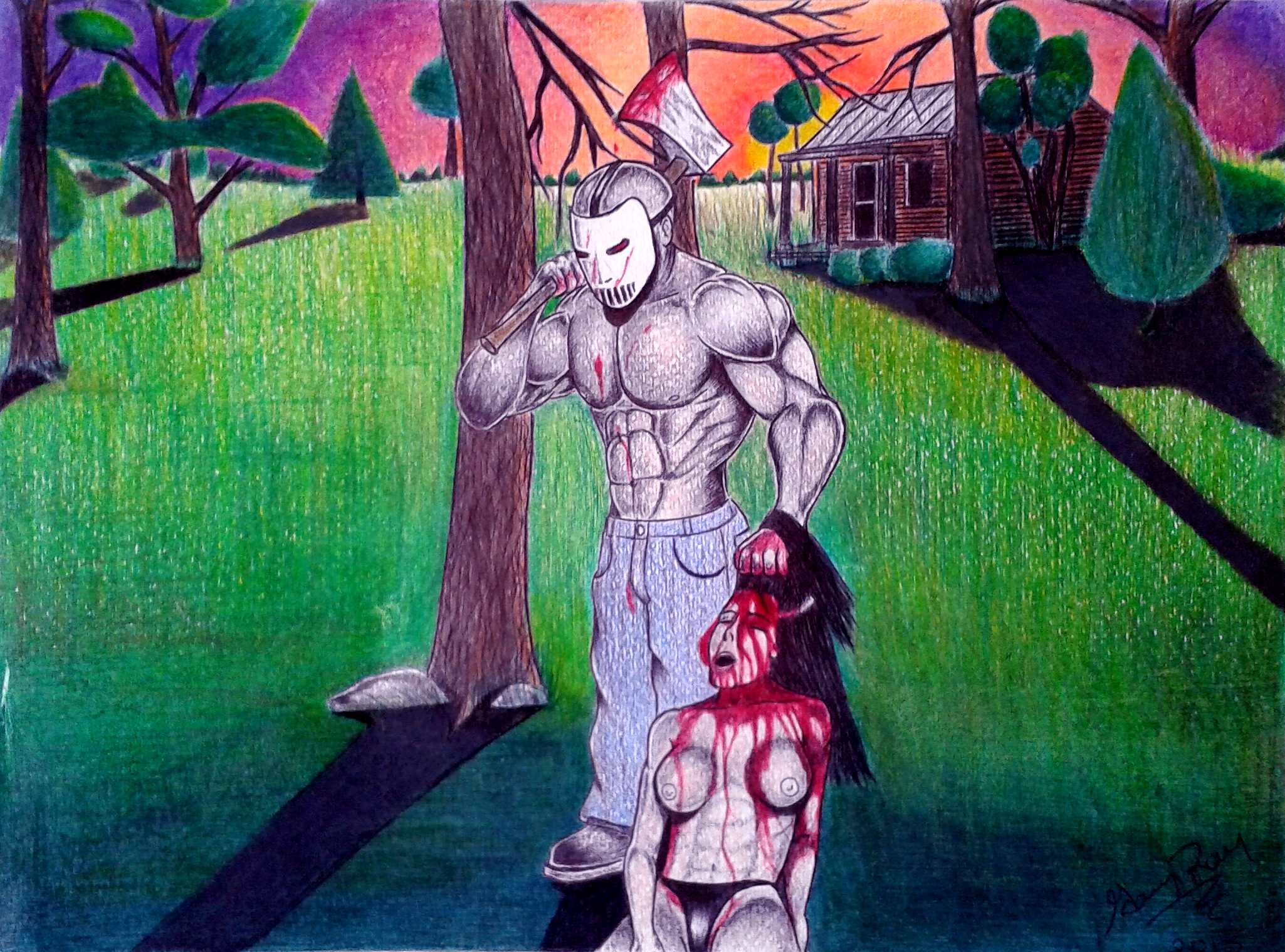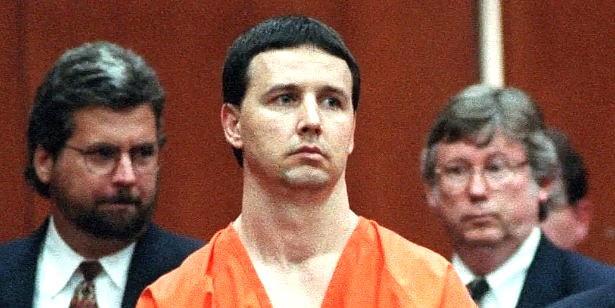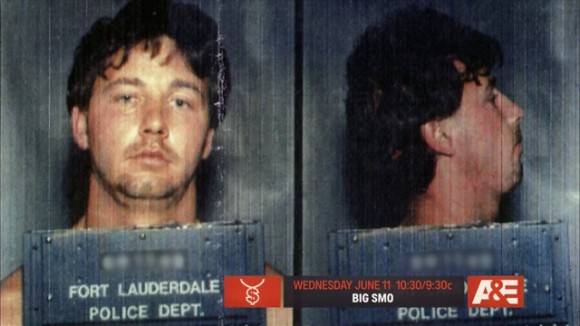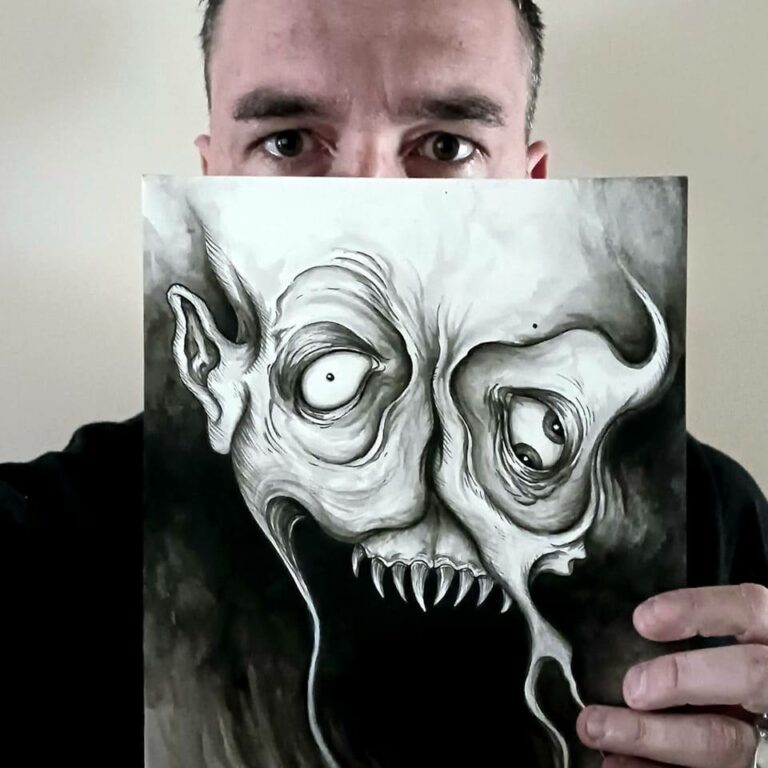Interview conducted with a master’s research student in Fine Arts for her thesis on carceral art and the phenomenon of murderabilia.
I know that you are a collector of “murderabilia” and correspond with certain serial killers. If you had to choose one, which serial killer has provided you with the most enriching exchanges and why?
It would be Patrick Wayne Kearney. Here’s a brief overview of his biography: “Patrick Wayne Kearney (born 09/29/1939) was convicted of 21 confirmed homicides (28 confessed), acts of necrophilia, and cannibalism in the 1970s. With an IQ of 180, he speaks seven languages fluently. A former computer engineer at the prestigious Hughes Aircraft Company and a consultant for the US Air Force. Dubbed by the media as ‘the trash bag killer,’ he scattered the remains of his victims in trash bags along Californian highways. His preferred victims were male hitchhikers, preferably well-built young men, runaways, hippies, and marginalized individuals, etc. Patrick Wayne Kearney operated from 1968 to 1977 when he was finally arrested after confessing to the police to protect his partner at the time. Kearney is a discreet man, and his story received little media attention at the time, overshadowed by coverage of Ted Bundy and John Wayne Gacy. He is considered one of the most intelligent serial killers of the second half of the 20th century.”
I began corresponding with Patrick Wayne Kearney in March 2010. He writes to me in French, which greatly simplifies our exchanges. We discuss various topics, although Kearney never directly mentions his criminal past and the atrocities he committed. Instead, his dark humor and cynicism speak volumes about him. He sometimes makes subtle allusions to tribal cannibalism, mentioning, for example, that human flesh tastes like pork or monkey, accompanied by a small smiley face. We mainly exchange thoughts on subjects such as international politics, sciences, literature, criminals, and famous cases, etc. Patrick Kearney has numerous interests, much like me. I have over 900 letters from him at home, receiving one each week.
From his cell, Patrick Wayne Kearney also corresponds with other inmates, obtaining their addresses through other external correspondents. Thus, he has had exchanges with former Panamanian dictator Manuel Noriega, French serial killers Patrice Alègre, Francis Heaulme, Guy Georges, and Belgian Marc Dutroux. He has also corresponded with British child killer Ian Brady and Robert Kennedy’s assassin, Sirhan Sirhan. Naturally, he also writes to criminals within the United States. Inmates communicate with each other, exchanging addresses, advice on managing their affairs, or media. It’s astonishing when you think about it; there is a real network. Naturally, in accordance with regulations, the letters are read by the administration. Besides that, they adhere to legality. Patrick Wayne Kearney enjoys intrigues, although this can sometimes lead to misunderstandings among external correspondents. Indeed, Patrick Wayne Kearney maintains correspondences with people whose information he crosses with others. Occasionally, this leads to absurd situations and conflicts between his correspondents. The golden rule is never to lose sight that one can be manipulated. Often, serial killers take pleasure in playing with the emotions of others. Even locked behind bars, it is a way for them to exert power, as they did with their victims. One must remain vigilant, not trust anyone from the outside, and take a lot of distance on things.
Is there an object or work in your collection that you cherish more than others? If so, which one and why?
No. Every creation is unique and tells something different depending on the person who produced it. That’s what makes it all interesting. Each work was created in the shadow and confinement of a cell, with makeshift means, using personal methods. Sometimes it’s with recycled paper, prison administrative documents, on the semi-annual cafeteria menus, cardboard from food packaging, and other times, on real drawing paper or canvas boards. The medium speaks volumes about the origin of these unique creations, bearing witness to the difficulty of creating in a carceral environment. Prison is a place where everything is done to erase the individuality and personality of a human being. American inmates are numbered, dressed in orange or blue uniforms. Despite everything, they manage as best they can to assert their personality. Some collectors gather personal effects of serial killers, such as used toothbrushes or clothing. It’s a form of idolatry, fetishism, and there is a market for it. Personally, I find it uninteresting and somewhat ridiculous.
Why are you so interested in serial killers?
Because since I was little, I’ve liked what is frightening. I enjoy horror movies, crime novels, the fantastic, and science fiction. I have always been attracted to the strange, probably because I felt different. When I read biographies detailing the childhood of serial killers, I often found great similarities with my own story. A difficult and violent childhood can generate a desensitization to the condition of others, even a progressive dehumanization. I myself evolved in such a toxic environment throughout my childhood that I did not escape from it. My activities around serial killers, therefore, have a cathartic dimension. I haven’t been so interested in them as in the causes that led me to them. I focused my attention on this type of criminal in particular because, to me, they represent the most authentic and extreme incarnation of everything that personifies the decadence of our own species. It has also been known for a long time that violent individuals have undergone psychological traumas during their childhood. It was very surprising for me to see how the darkness of my correspondents brought answers to my own and helped me understand myself better. I learn from others, about myself, and more broadly, about humankind. I am also very interested in the “cultural” dimension of the serial killer, his position in popular culture, between fascination and repulsion.
Do you think it’s possible to define the art of serial killers, or is it an art that eludes us?
The “art” of serial killers is often made up of childish, uninteresting copies. However, some serial killers, through their drawings, offer glimpses into what can be called true mental landscapes. They provide a view of their psyche, express fears, reminiscences of their criminal acts or past, and sometimes, their darkest fantasies. Some are sometimes very talented. I think of Gary Ray Bowles or Keith Hunter Jesperson… However, the rise of murderabilia (a portmanteau term to define objects related to criminals and the resulting market) leads serial killers to respond to demand from sellers/collectors who want “diabolical” works, meaning the bloodiest and most frightening possible. Thus, many incarcerated criminals provide creations on demand, of course, within the limits of what the prison administration allows to pass.
Is it possible to draw parallels between your works and those of serial killers?
I don’t know. My works are the result of a personal and intimate approach. Again, there is a cathartic dimension. I release a lot of negative things through drawings and paintings. I put on paper or canvas my fears, anxieties, and uncertainties. Perhaps that’s why I am so joyful every day. It’s very liberating and a way for me to express the inexpressible. If I made music, I would play hardcore or black metal, but I have no musical talent. So, I express my violence and darkness with my brushes and pencils. But I don’t think my creations are linked to those of killers. I don’t see what connection is possible, considering that my “art” is primarily influenced by other artists such as Francis Bacon, H.R. Giger, Egon Schiele, and not by criminals. I also have a very personal relationship with beauty and ugliness.
“Fair is foul, and foul is fair.” – William Shakespeare



